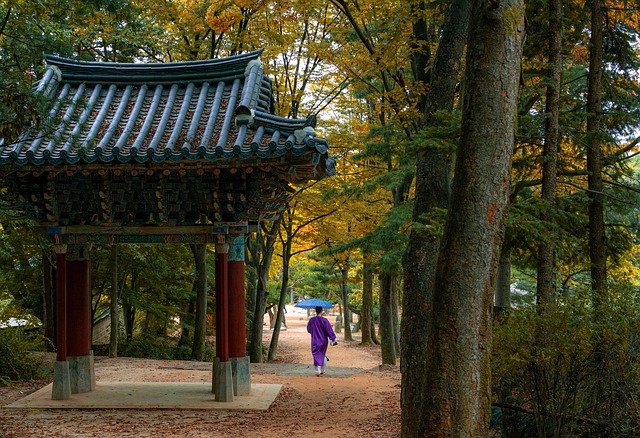
Gimhae Buncheong Ceramics Museum: Where Millennia of Tradition Meets Modern Craftsmanship

For over two millennia, Gimhae’s pottery has been a symbol of the city’s rich heritage. Recognizing this, Gimhae opened its pioneering Buncheong Ceramics Museum in May 2009, dedicated solely to Buncheong ceramics. By 2019, it gained recognition as a potential tourist spot by the Korea Tourism Organization. Recent enhancements in 2022 saw a major facility upgrade and the addition of a hands-on pottery hall.
“Earth, Flame, and People: Where Art's Essence Breathes in the scent of Clay”
Today, Gimhae Buncheong Ceramics Museum stands as a beacon for ceramic enthusiasts, offering annual exhibitions, traditional kiln events, specialized courses for local artisans, children’s pottery classes, and a unique program named ‘DO.SI.RAK’ for a therapeutic ceramic experience.

What is Dojagi?
Dojagi, or Ceramics, has been an integral part of our daily life. Literally, it refers to all objects made by baking clay. The history of ceramics in Korea spans over 10,000 years, and depending on the clay, glaze, and hardness, it’s classified into pottery, earthenware, porcelain, and stoneware. Vessels molded from clay evolved from simple pottery to beautiful porcelain as human wisdom progressed. In modern times, ceramics are not only used for daily utensils but also in a wide range of areas including tiles, glass, and dental implants.
Development Stages of Ceramics
Korea’s ceramic heritage began with the Neolithic era’s distinctive combed-pattern and added-clay pottery. The Bronze Age ushered in the age of unadorned pottery, and by the early Iron Age, potters were crafting pieces with clay bands adorning the rims. The Proto-Three Kingdoms era then saw the rise of soft pottery. During the Three Kingdoms era, there was a shift to ceramics kilned at over 1,100°C, cultivating the individual pottery traditions of the Goguryeo, Baekje, Silla, and Gaya dynasties. Celadon, a glazed stoneware influenced by Chinese techniques, emerged in the Goryeo period. The Joseon dynasty then popularized Buncheong ware and white porcelain.
Understanding Buncheong Ware
Buncheong ware (粉靑沙器) is a type of ceramic made by applying a white slip (白土) to gray or gray-black clay, then glazing and firing it. The term has a fascinating origin. During the Japanese colonial period, art historian Mr. Woo Hyun Ko Yoo-seop (又玄 高裕燮. 1905~1944) began referring to ceramics that, while similar in shape, decoration, and glaze color to celadon or white porcelain, had distinctive features. He called them ‘粉粧灰靑沙器’ or ‘powdered bluish-gray ceramics’. This name was eventually shortened by subsequent scholars to ‘Buncheong ware’ or ‘분청사기’.
Emerging in the late 14th century as a successor to celadon, Buncheong ware was produced for about 150 years until the early 16th century. Among Korean ceramics, it stands out for its unpretentious, folk-art character.
Exhibitions: Let's Explore the Buncheong Ceramics Museum!
Start in the ‘Ceramic Culture Room’, where you’ll get acquainted with the fascinating world of ceramics, particularly the unique Buncheong ware. Uncover the varied types, learn about Gimhae’s rich ceramic history, and see how Buncheong ware has transformed over the centuries—all through engaging videos and informative panels.
Then, make your way to the ‘Permanent Exhibition Room’. Split into two distinct sections—the Buncheong Ware and the Gimhae Ceramics—you’ll encounter beautiful Buncheong pieces engraved with writings, artifacts crafted using various techniques, iconic Buncheong kiln sites from the Gyeongsang area, and a collection of masterpieces showcasing Gimhae’s ceramic culture.
The Gimhae Buncheong Ceramics Museum stands as a testament to both the enduring legacy and the continued innovation of Korean ceramics. As the narrative unfolds, from ancient Neolithic pottery to the exquisite Buncheong wares, visitors embark on a journey not just through history, but through the soul of an art form. This establishment isn’t just a museum; it’s a bridge between past and present, tradition and modernity, making it an essential stop for anyone passionate about the world of ceramics or simply curious about Korea’s rich heritage. The tales told by clay and fire here resonate deeply, reminding us of the timeless beauty and cultural significance crafted by human hands. When in Gimhae, make it a point to embrace this ceramic odyssey—the stories here are both timeless and ever-evolving.

Location
Images from: 한국관광공사, https://www.kogl.or.kr/recommend/recommendDivView.do?recommendIdx=38023&division=img






